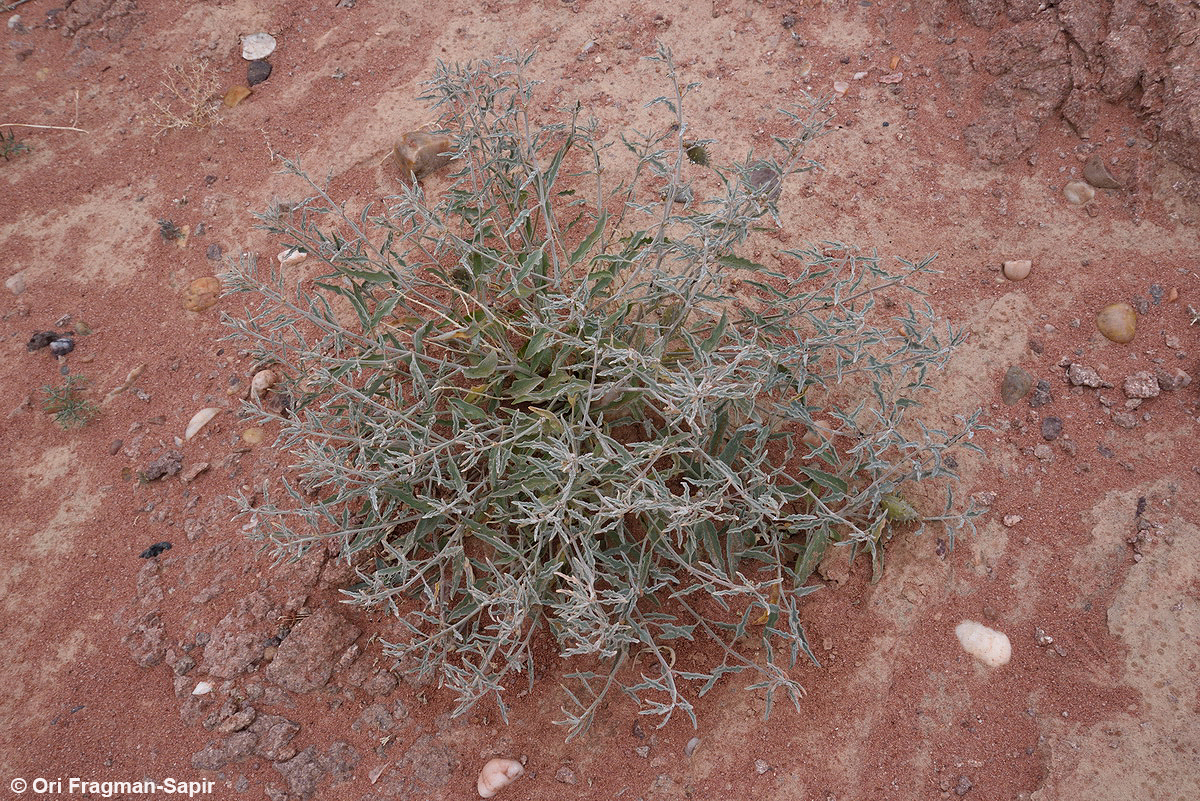Glossonema boveanum

|
|
Glossonema boveanum Common Names: Desert Rose, Milkweed Vine, Greenhood Orchid, Bove's Greenhood Scientific
Classification Kingdom: Plantae Phylum: Tracheophyta Class: Magnoliopsida Order: Gentianales Family: Apocynaceae Genus: Glossonema Species: G. boveanum Authority: (Decne.) Decne. Synonyms: Cynanchum boveanum Decne., Glossonema affine N.E.Br., Glossonema echinatum Hochst. ex Di Capua, Glossonema erlangeri K.Schum., Odontanthera boveana (Decne.) Mabb. Morphological Description Glossonema boveanum is an evergreen, perennial herb or subshrub in the
Apocynaceae family, typically growing up to 30–50 cm tall: · Stem: Erect or sprawling, succulent, glabrous or slightly
pubescent, often branching from the base (Burkill, 1985). · Leaves: Opposite, linear to lanceolate, 3–7 cm long, 0.5–1.5 cm
wide, fleshy, with a waxy surface (Fern, 2024). · Flowers: Small, white to pale yellow, 5–10 mm in diameter, in
axillary clusters; corolla 5-lobed, star-shaped (Field, 1982). · Fruit: Follicles, paired, 5–8 cm long, containing numerous seeds
with silky hairs (Rapini, 2003). Distribution and Habitat Glossonema boveanum is native to arid and semi-arid regions of Africa and the
Middle East, not South Africa as previously suggested: · Range: West Africa (Nigeria, Niger), East Africa (Sudan, Ethiopia),
Arabian Peninsula (Yemen, Saudi Arabia) (Burkill, 1985; Fern, 2024). · Habitat: Sandy deserts, rocky hillsides, dry riverbeds; thrives in
hot, dry climates with 100–400 mm annual rainfall (Collenette, 1999). Ethnopharmacology Glossonema boveanum has been traditionally employed to address various ailments,
including pelvic inflammatory disease, gonorrhea, chlamydia, and hemorrhoids. Phytochemical investigations have revealed
the presence of bioactive compounds such as alkaloids, steroids, triterpenes,
cardiac glycosides, saponins, tannins, and flavonoids. Notably, betulinic acid,
a pentacyclic triterpene with recognized antimicrobial properties, has been
isolated from its stem bark. The plant exhibits significant antimicrobial
activity against pathogens like Staphylococcus aureus, Bacillus subtilis,
Salmonella typhi, Shigella dysenteriae, Escherichia coli, and Candida albicans.
These findings support
the traditional use of Glossonema boveanum in managing various infections and
highlight its potential as a source of therapeutic agents. · Antipyretic: Leaf infusions in Sudan treat fevers; methanol extract (200
mg/kg) reduced fever in rats by 1.5°C (Khalid et al., 2012). · Respiratory Relief: Decoctions in Nigeria for coughs and colds. · Diuretic: Roots in in Nigeria are used for kidney issues and urinary
infections. · Anti-inflammatory: Leaf paste in Ethiopia for swelling. · Antimicrobial: Antimicrobial study of the extracts showed
activities against Staphylococus aureus, Bacillus subtilis, Salmonella typhii,
Shigella dysenteriae, Escherichia coli, Enterobacter cloacae, Streptococcus
agalactiae and Candida albicans while Micrococcus luteus, Pseudomonas
aeruginosa and Klebsiella Pneumoniae showed resistance to all the extracts
(Uttu et al., 2017). ⚠ Toxicity Profile: Mild toxicity reported; latex contains
cardenolides, potentially causing nausea or cardiac effects at high doses
(Burkill, 1985; Khalid et al., 2012). Additional Uses · Culinary: Young leaves and fruits eaten raw or cooked in Sudan and
Nigeria during scarcity (Burkill, 1985). · Ornamental: Grown for its attractive foliage and flowers in arid gardens
(Collenette, 1999). · Fodder: Used as emergency livestock feed in Yemen (Fern, 2024). References
External Links More Pictures |
|
| Compounds of Glossonema boveanum | |
| References |